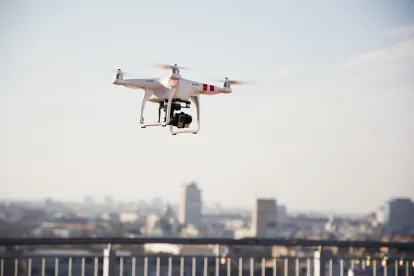On June 21, the Federal Aviation Administration (FAA) finalized its first operational rules for routine commercial use of small unmanned aircraft systems (UAS or drones). The FAA noted in its release that the new rule could generate more than $82 billion for the U.S. economy and create more than 100,000 new jobs over the next 10 years. The new rule takes effect in late August and offers safety regulations for drones (inclusive of payloads) weighing less than 55 pounds. This rule expressly does not apply to model aircraft operators, who must continue to satisfy the criteria specified in Section 336 of Public Law 112-95. The full FAA summary of the small UAS Rule (Part 107) is here, but the following are some highlights of various operational limitations, including:
- Drone and payload must weigh less than 55 pounds
- Operation is limited to visual line-of-sight only
- Drones may not operate over any persons not directly participating in the operation
- Daylight-only operations, or civil twilight with appropriate anti-collision lighting
- Must yield right of way to other aircraft
- No visual observer requirement
- First-person view camera cannot satisfy the “see-and-avoid” requirement, but can be used if requirement is otherwise satisfied
- Maximum altitude of 400 feet above ground level or within 400 feet of a structure
- Maximum groundspeed of 100 mph (87 knots)
- No careless or reckless operations
- However, most of the operational limitations are waivable if the applicant demonstrates that operation can safely be conducted under the terms of a certificate of waiver. The FAA expects a large number of waiver requests and will make an online portal available to apply for such waivers, which will likely be available on the FAA’s Certificates of Waiver or Authorization website.
The FAA rule also establishes operator certification requirements and flight responsibilities such as:
- Operator must either hold a remote pilot airman certificate with a small UAS rating or be under the direct supervision of a person who holds a remote pilot airman certificate with a small UAS rating
- To obtain a remote pilot airman certificate with a small UAS rating, an operator must be at least 16 years old, pass a vetting from the Transportation Security Administration, and either:
- pass an initial aeronautical knowledge test at an FAA-approved knowledge testing center, or
- hold a Part 61 pilot certificate other than a student pilot, complete a flight review within the previous 24 months, and complete a small UAS online training course provided by the FAA
- During operation, a remote pilot in command must be established, and the remote pilot in command must:
- Make available to the FAA, upon request, the small UAS for inspection or testing
- Provide any associated documents and records required to be kept by any rule
- Report to the FAA within 10 days any operation that results in serious injury, loss of consciousness or property damages of at least $500
- Conduct a preflight inspection to ensure safe flight condition





 />i
/>i

